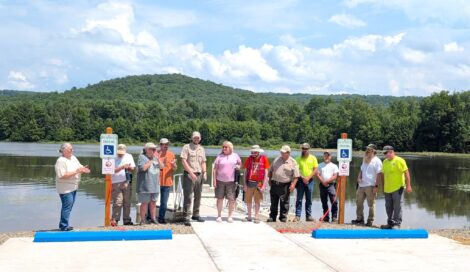State historical marker dedication set for September 25

The work of Dr. Stanley Lantz, left pictured with his wife, Donna Smith, served as the impetus for a state historical marker set to be dedicated on September 25 in Starbrick.
A new state historical marker in Warren County is set to be dedicated next week.
Sept. 25 has been set as the date to dedicate the marker, approved last March, for the “Mead Island Tradition.”
The location is 20050 Route 6 in Starbrick, just west of Warren County Memorial Park at the intersection with Scientific Road. The event will start at 1 p.m. and parking will be available along the roadway or in the park.
The Pennsylvania Historical and Museum Commission (PHMC) approved historic markers for the Mead Island Tradition and 22 other sites in the state back in March.
The application was filed by Ken Burkett of the Jefferson County Historical Society and the Society for Pennsylvania Archaeology. It includes supporting letters from the president of the society for Pennsylvania Archaeology, the Senior Curator of Archaeology for the State Museum of Pennsylvania, and the Immediate Past President of the Eastern States Archaeological Federation.
“No knowledge remains today of what prehistoric Native American groups throughout Pennsylvania actually called themselves,” Burkett explained. “When recording a newly discovered site, most archaeologists utilize the name of the landowner, location or some unique local place name.”
This site, he explained, is considered a type site — a “model of a particular archaeological culture with unique aspects not shared by their regional neighbors. These sites become important and the newly identified archaeological tradition usually identifies with the name of the site.”
Burkett said the Mead Island Tradition was “first identified in 1964 by Dr. Stanley Lantz, Staff Archaeologist with the Carnegie Museum of Natural History in Pittsburgh.
“This prehistoric Native American culture was the dominant early Late Woodland occupation of the Middle Allegheny River region between 960 A.D. and 1360 A.D. To date, this complex includes nine known villages, six rockshelters and five campsites all located on terraces or Islands within the Allegheny River valley beginning at the confluence of the Conewango Creek in Warren and extending 179 miles downriver to the juncture of the Kiskiminetas River near Freeport in Armstrong County.”
The archaeological field work spanned over three decades.




